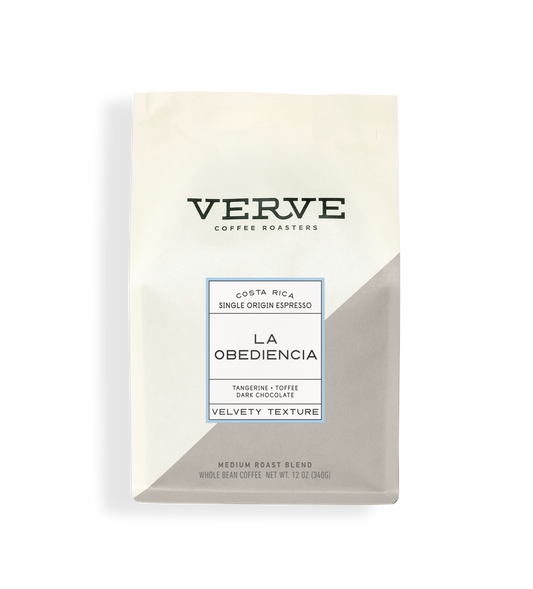The Coffee Lover’s Guide to SOE Single Origin Espresso Varieties
The Coffee Lover’s Guide to SOE Single Origin Espresso Varieties
Blog Article
Understanding Coffee Beans: the Trip From Coffee to Blended Coffee Beans

The Origins of Coffee: A Global Perspective
While you may believe of coffee as a contemporary staple, its beginnings map back centuries, intertwining with societies across the world. The story starts in Ethiopia, where legend claims a goat herder named Kaldi discovered the energizing effects of coffee beans after noticing his goats romping energetically after eating them.
As trade courses increased, coffee made its method to Europe in the 17th century, swiftly acquiring appeal. It transformed from a magical beverage right into an everyday routine, motivating events and intellectual exchanges. Each society added its special spin to coffee preparation, enriching its history. This worldwide trip highlights how coffee links us, transcending boundaries and joining diverse practices via a basic bean.
Farming and Harvesting of Coffee Beans
As coffee's journey progressed, the emphasis moved to the growing and harvesting of details bean selections, specifically those made use of for coffee. You'll locate that coffee beans often come from Arabica or Robusta plants, each offering unique tastes. The optimal expanding conditions consist of high elevations and abundant, well-drained soil, which improve the beans' top quality.
Throughout the harvest, selecting methods differ. Timing is crucial; you want to harvest when the cherries get to peak perfection for maximum flavor.
Once harvested, the beans are planned for handling, which is vital in identifying their last preference. Comprehending the cultivation and collecting processes gives you understanding right into what enters into your preferred espresso, improving your gratitude for each mug.
Processing Approaches: From Cherry to Bean
Since you've discovered gathering espresso beans, allow's check out how those cherries change right into the coffee beans you love. You'll see just how different harvesting methods influence flavor, adhered to by the necessary steps of fermentation and drying out. Finally, we'll damage down the milling and grading process that establishes your coffee's high quality.
Collecting Techniques Explained
When it involves coffee, comprehending harvesting strategies is necessary, since they straight affect the flavor and quality of the beans you delight in. There are two key methods: selective selecting and strip picking. Discerning selecting entails hand-picking just ripe cherries, guaranteeing you get the most effective top quality beans. This technique typically causes a richer flavor profile, though it's more labor-intensive. On the various other hand, strip selecting methods harvesting all cherries at when, despite perfection. While it's quicker and more affordable, this can cause a mix of tastes, affecting the end product. Ultimately, the option of gathering method can greatly influence your coffee experience, so it's worth knowing how those beans made it to your cup.
Fermentation and Drying Out
After harvesting, the next actions in handling coffee beans play a significant role in shaping their flavor. You'll locate that fermentation is crucial, as it assists break down the mucilage surrounding the beans, enhancing their taste account. Relying on the method, this process can last from a couple of hours to numerous days, with varying outcomes based on temperature and humidity.
When fermentation is full, drying out follows, which is similarly vital. You can pick from sun-drying or mechanical drying techniques. Sun-drying permits the beans to absorb tastes from the atmosphere, while mechanical drying warranties constant moisture levels no matter of climate. Appropriate drying is necessary to avoid mold and mildew and maintain the beans' high quality, eventually influencing your mug of coffee.
Milling and Grading Refine
As fermentation and drying out set the stage for flavor advancement, the milling and grading process warranties that only the ideal coffee beans make it to your cup. This stage entails eliminating the external layers of the coffee cherry, including the parchment and husk. High-grade beans get a greater quality, resulting in a richer coffee experience.
Roasting Strategies: Opening Flavor Potential
When you roast coffee beans, the technique you pick can considerably impact the flavor account. Comprehending the relationship between time, temperature level, and roasting techniques is vital to exposing the capacity of your brew. Let's discover exactly how these aspects integrated to develop the excellent cup.
Toasting Methods Explained
While you might believe that all coffee toasting approaches yield the exact same results, the truth is that each technique discloses distinct taste possibilities in the beans. Drum toasting makes use of a rotating drum to uniformly distribute warm, improving caramelization and creating a balanced flavor. Air roasting, on the various other hand, circulates hot air around the beans, promoting a lighter roast with noticable level of acidity.

Impact on Taste Profile
Various toasting techniques not only affect the process yet also significantly influence the taste account of the coffee beans. When you choose a light roast, you'll experience bright level of acidity and flower notes, showcasing the bean's beginning. In contrast, a tool roast equilibriums acidity with sweet taste, typically disclosing chocolatey touches. Dark roasts, on the other hand, bring out strong, great smoky tastes, go in some cases masking the bean's unique qualities. Each strategy discloses various oils and substances, leading to a broad variety of flavors. By trying out with numerous toasting designs, you can discover which accounts resonate with your taste. Understanding these nuances helps you appreciate the artistry behind your mug of coffee, improving your total experience with every sip.
Time and Temperature Level Variables
To release the full flavor possibility of coffee beans, both time and temperature level throughout the toasting process play considerable functions. When roasting, you'll discover that greater temperature levels can quickly establish tastes, but if you hurry it, you might wind up with scorched notes. On the other hand, lower temperature levels enable a much more gradual taste advancement, showcasing the beans' distinct attributes.

Timing is simply as essential; extending the roast too long can cause a loss of anonymous acidity and brightness, while as well brief a roast could leave the beans underdeveloped. Discovering that pleasant place calls for technique and experimentation. By adjusting these variables, you can reveal the rich, complex tastes concealed within each bean, producing a truly exceptional coffee experience.
The Art of Blending: Crafting Distinct Coffee Accounts

Begin by picking a base coffee that gives a strong structure. An intense Ethiopian bean can bring fruitiness, while an abundant Brazilian coffee includes body.
As you blend, bear in mind that each combination tells a story. You're not just making coffee; you're producing an experience. So, take your time, taste often, and appreciate the trip of discovering your signature mix.
Brewing Methods: Exactly How Prep Work Impacts Flavor
Mixing coffee opens a domain name of taste possibilities, but how you brew that blend can significantly affect your last cup. Various developing techniques remove unique flavors and fragrances, so it's critical to choose carefully. A French press allows oils and debris to remain, developing a rich, robust experience. On the other hand, a pour-over highlights the coffee's clarity and illumination, ideal for showcasing fragile notes.
Coffee, with its high pressure, produces a concentrated shot that accentuates sweet taste and crema. If you favor a lighter mixture, think about a cool brew approach; it yields a smooth, much less acidic preference.
Eventually, experimentation is crucial. Adjusting variables like water temperature level, grind dimension, and brew time can change your coffee's profile. Accept the art of developing to find the tastes hidden in your coffee blends. The right technique can boost your experience to new elevations.
The Future of Coffee: Sustainability and Development
As the coffee sector develops, sustainability and advancement are becoming crucial for attending to ecological difficulties and conference customer needs. You'll see that even more coffee companies are embracing environmentally friendly practices, from sourcing beans ethically to carrying out sustainable farming strategies. These shifts not only help the world however likewise improve the top quality of the coffee you appreciate.
You might see developments like naturally degradable packaging and water-saving brewing techniques that lower waste. Advanced modern technology, such as blockchain, is additionally becoming preferred, making sure openness in the supply chain, which permits you to map your coffee back to its beginnings.
Additionally, buying regional neighborhoods and sustaining farmers with fair trade initiatives promotes a much more sustainable coffee community. As you sip your next mug, keep in mind that your selections can add to a brighter future for helpful hints coffee. By going with sustainable brand names, you're not simply appreciating a drink; you're making a favorable influence on the world.
Regularly Asked Inquiries
What Is the Distinction Between Arabica and Robusta Beans?
Arabica beans are smoother, sweeter, and have a higher acidity, while robusta beans are more powerful, a lot more bitter, and consist of more caffeine. When brewing your coffee., you'll discover these distinctions in flavor and fragrance.
Exactly How Does Altitude Affect Coffee Bean Taste?
Elevation effects coffee bean taste considerably. Greater elevations generate beans with brighter acidity and facility flavors, while reduced elevations usually generate beans that are much heavier and much less nuanced. You'll see these differences in your mug!
What Are the Health And Wellness Benefits of Alcohol Consumption Coffee?
Drinking coffee can improve your energy, enhance psychological focus, and also boost physical performance. It's abundant in antioxidants, may decrease the risk of particular illness, and can promote a much healthier metabolic process when eaten in moderation.
Can Coffee Beans Be Recycled for Brewing?
Yes, you can reuse coffee beans for developing, however the flavor could be weaker. If you delight in experimenting, try recycling them in different means, like cool brews or including in smoothie mixes for an additional kick.
Just how Should I Shop Coffee Beans for Quality?
To maintain your coffee beans fresh, save them in a closed container in a trendy, dark location. Prevent subjecting them to light, warm, or dampness, as these elements can promptly degrade their flavor and aroma.
Recognizing Coffee Beans: the Journey From Coffee to Blended Coffee Beans.
Currently that you've discovered concerning harvesting espresso beans, allow's check out how those cherries change right into the coffee beans you like.When you roast coffee beans, the technique you pick can considerably impact the taste account - Single Origin Espresso.While you may assume that all coffee roasting techniques yield the same outcomes, the fact is that each strategy exposes special flavor possibilities in the beans.Various toasting techniques not just influence the process but additionally greatly affect the flavor profile of the coffee beans
Report this page